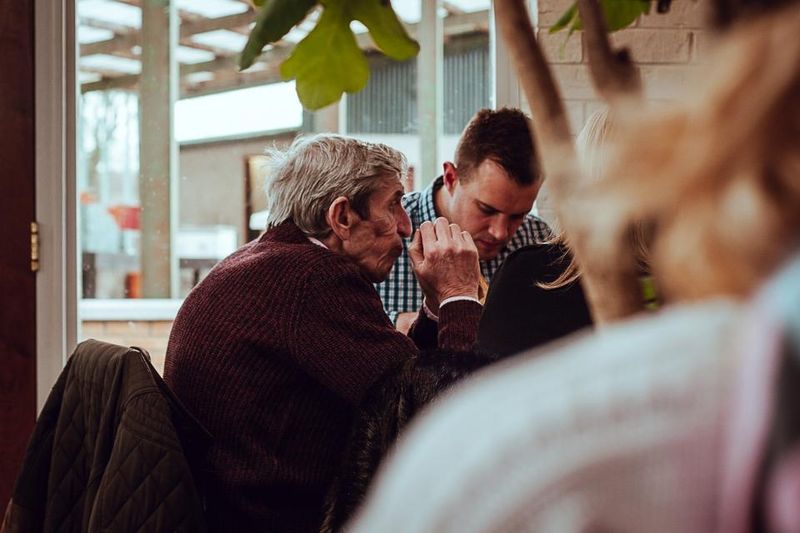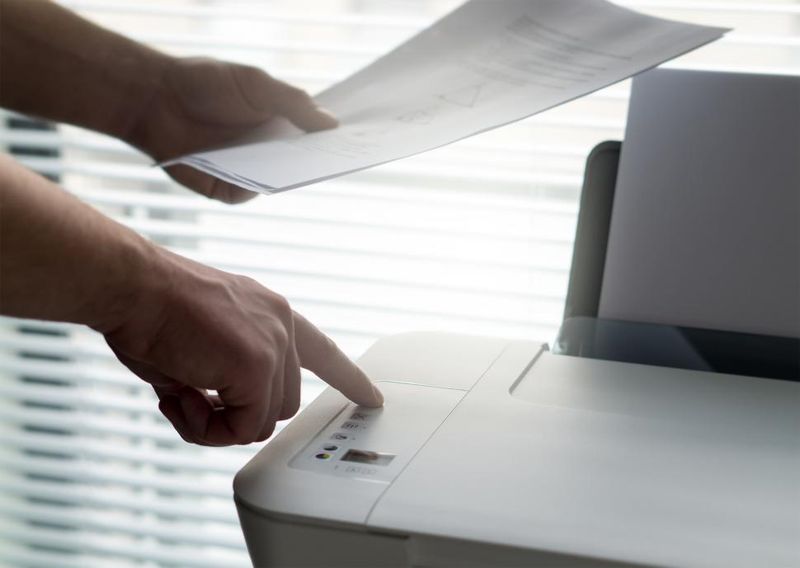Every generation has its quirks, and Baby Boomers are no exception. Some habits that felt perfectly normal decades ago can feel a bit out of step with how younger folks communicate and live today. This isn’t about pointing fingers, it’s about bridging the gap and understanding why certain behaviors make Millennials and Gen Z cringe just a little.
1. Putting everything in all caps online
ALL CAPS reads like shouting, and nobody enjoys being yelled at online. What might seem like helpful emphasis actually comes across as aggressive or angry to most readers. Internet etiquette has evolved, and all-caps typing is universally understood as digital screaming.
If you need emphasis, use bold, italics, or—dare we say—an exclamation mark (just one!). Modern platforms offer plenty of formatting options that convey excitement or importance without the hostility. Lowercase letters mixed with occasional emphasis tools create a friendlier, more approachable tone.
Your message will land better when people don’t feel attacked by your font choice.
2. Calling instead of texting for simple things
“On my way” or “Here at 6?” is a text, not a 10-minute phone conversation. Younger generations prefer texts for quick logistical updates because they’re efficient and don’t interrupt whatever else is happening. Phone calls require both people to stop everything and focus exclusively on the conversation.
Save calls for real conversations that need back-and-forth discussion or emotional nuance. When you call for something that could’ve been a text, the recipient has to drop what they’re doing, find a quiet space, and engage immediately. Texts allow people to respond when convenient.
Respecting communication preferences strengthens relationships rather than straining them with unnecessary interruptions.
3. Leaving long voicemails (or any voicemails)
A missed call plus a text equals perfection in modern communication. Voicemails require listeners to dial in, wait through prompts, and often replay sections to catch details. It’s clunky and time-consuming when a simple text would deliver the same information instantly.
If you absolutely must leave one, keep it under 20 seconds with a clear ask. State your name, reason for calling, and what you need in one concise breath. Most people under 40 rarely even check their voicemail anymore.
The “call me back” message works far better as a text with context about why you’re reaching out.
4. “Back in my day” comparisons as conversation enders
Nostalgia is great when shared as a story or memory. Using it to dismiss new tools, music, or work norms shuts down dialogue and makes younger people feel invalidated. Every generation faces different challenges and opportunities shaped by their unique circumstances.
Try “tell me how you use it” instead of comparing everything to how things worked decades ago. Curiosity builds bridges while comparisons build walls. What worked in 1975 might not apply to 2025’s economy, technology, or social landscape.
Genuine interest in understanding new perspectives creates meaningful conversations rather than lectures that leave everyone frustrated and disconnected from each other.
5. Dropping by unannounced
Pop-ins were a 1980s sitcom thing, complete with laugh tracks and predictable punchlines. Today’s reality involves work-from-home schedules, mental health boundaries, and homes that aren’t always “guest ready.” An unexpected knock can trigger genuine anxiety for people managing tight schedules or personal space needs.
A quick “you free if I swing by?” text saves everyone stress and awkwardness. It gives the other person a chance to say yes enthusiastically or suggest a better time without feeling guilty. Respecting boundaries strengthens relationships.
Spontaneity is lovely when it’s welcomed, but not when it catches someone off guard in their safe space.
6. Paper bills and checks… for everything
Autopay and digital wallets reduce late fees, fraud risk, and wasted time hunting for stamps. Paper systems require physical storage, manual tracking, and trips to the mailbox that digital alternatives eliminate entirely. Security features in banking apps often exceed what paper mail can offer.
Keep checks for rare cases like paying a contractor or writing a gift check. For monthly utilities, subscriptions, and routine payments, automation ensures nothing slips through the cracks. You’ll also have digital records that are searchable and backed up automatically.
Going paperless isn’t just trendy—it’s practical, secure, and environmentally friendlier for everyone involved in the process.
7. Commenting on appearance and weight as small talk
“Have you lost weight?” or “You look tired” can land poorly even when meant as compliments. Weight and appearance comments carry hidden assumptions about what’s “better” or “normal,” and they can trigger insecurity or remind someone of struggles you know nothing about.
Safer opener: “It’s great to see you—how’ve you been?” This invites the other person to share what matters to them without putting their body under scrutiny. Appearance-based small talk feels invasive to many younger people who value being seen for their thoughts and accomplishments.
Focus on connection rather than observation, and conversations will feel warmer and more genuine for everyone.
8. Oversharing medical details at dinner
We care about your health and genuinely want you to be well! But maybe not during appetizers when everyone’s trying to enjoy their meal. Graphic medical details and dinner don’t mix well, especially when people are mid-bite.
Set a time for the deeper health chat if it’s important and you need support. A quick “can we talk later about something I’m dealing with?” respects everyone’s boundaries while still getting you the conversation you need. Medical updates are appropriate—just timing matters.
Save the detailed symptom descriptions for after dessert or a private moment when listeners can give you their full, undistracted attention.
9. Using speakerphone in public
Bus. Cafe. Waiting room. Doctor’s office. Grocery store. Everyone within 20 feet can hear both sides of your conversation, and they didn’t consent to being part of it. Public speakerphone use forces strangers to become unwilling audience members to your personal business.
Headphones are your (and our) friend. They’re inexpensive, widely available, and they keep conversations private while leaving your hands free. Even cheap earbuds work perfectly fine for phone calls without broadcasting your voice or the caller’s responses.
Shared spaces work better when everyone respects the sound environment and keeps their noise footprint minimal and considerate.
10. Treating customer-facing workers like “the help”
Names, eye contact, and “please/thank you” turn transactions into human moments—and usually result in better service too. Customer-facing workers deal with hundreds of people daily, and being treated like invisible servants takes an emotional toll. They’re doing their jobs, not serving a master.
A smile and basic courtesy cost nothing but make someone’s difficult shift a little easier. When you acknowledge workers as people worthy of respect, they’re more likely to go the extra mile to help you. Rudeness, on the other hand, guarantees minimum effort.
Kindness creates a ripple effect that improves everyone’s day, including yours when you need assistance or flexibility.
11. “I’m just being honest” as a hall pass
Honesty is helpful when delivered with care; bluntness without empathy isn’t honesty—it’s cruelty with an excuse. If your “honesty” consistently hurts feelings or damages relationships, the problem isn’t other people being too sensitive. It’s the delivery method.
If it’s “just honesty,” it shouldn’t require a disclaimer or defense afterward. True honesty considers both truth and kindness, finding ways to communicate difficult things without unnecessary harm. You can be direct and still compassionate.
People appreciate genuine feedback delivered respectfully, but using honesty as a weapon disguised as virtue helps no one and damages trust over time.
12. Parking lot negotiations (“I’ll only be a minute”)
Fire lanes, curb cuts, bike lanes, and accessible parking exist for safety and accessibility, not convenience. A “quick errand” doesn’t grant exemption from rules designed to protect people. That fire lane could be the difference between emergency responders reaching someone in time or not.
Disabled individuals need those curb cuts and spaces—your two-minute stop could block someone’s only way to access a building. Bike lanes keep cyclists safe from traffic, and blocking them forces riders into dangerous situations.
Find a legal spot even if it means walking an extra minute. Rules aren’t suggestions when they protect vulnerable people.
13. Paper-clipping and printing emails for meetings
Share links or files ahead of time and keep a live document for action items. Printing emails creates unnecessary paper waste, makes searching for information harder, and means any updates require reprinting everything. Digital files are searchable, editable, and accessible from anywhere.
Collaborative documents let everyone see real-time changes and contribute simultaneously. No more “which version are we looking at?” confusion or lost paper copies. Cloud storage keeps everything organized and backed up automatically.
Going digital saves paper, reduces confusion, and makes information easier to find later when someone inevitably asks, “What did we decide about that?”
14. Reply-all for “Thanks!”
Every inbox thanks you for not doing this. When 47 people are copied on an email, nobody needs 46 individual “Thanks!” messages clogging their notifications. Reply-all should be reserved for information that genuinely affects everyone on the thread.
If you want to thank someone, reply only to the sender or use a direct message. Mass thank-yous create notification overload and make it harder for people to spot messages that actually require their attention. It’s digital noise pollution.
Before hitting reply-all, ask yourself: does every single person on this list need to see my response? Usually, the answer is no.
15. Expecting instant tech support from younger relatives
We love helping family with technology, truly. But a quick Google search or YouTube tutorial first goes a long way toward solving simple problems independently. Most tech issues have step-by-step solutions online that take minutes to find.
Send the specific error message when you do ask for help. “It’s not working” doesn’t give enough information to troubleshoot remotely. Screenshots or photos of error screens make helping you much faster and easier. We’re happy to assist with genuinely tricky problems.
Learning basic troubleshooting—restarting devices, checking connections, updating apps—empowers you and reduces frustration on both sides when technical hiccups happen.
16. Dismissing remote/hybrid work as “not real work”
Output matters more than where your laptop is physically located. Plenty of jobs are measurable without a badge swipe or visible desk time. Remote workers often produce equal or better results because they avoid commute exhaustion and office distractions.
Technology enables collaboration across continents in real-time. Video calls, project management tools, and cloud documents make location increasingly irrelevant for knowledge work. Judging work quality by physical presence is outdated when results speak for themselves.
Flexibility improves work-life balance, reduces burnout, and expands job opportunities for people with disabilities, caregiving responsibilities, or geographic limitations previously excluded from certain careers.
17. Political lectures at family events
If folks didn’t opt in to a political discussion, keep it light and focus on what brings everyone together. Family gatherings are meant for connection, not conversion. Unsolicited lectures create tension and resentment that lingers long after dessert.
Ask questions, listen genuinely, and know when to change the subject. Curiosity about others’ perspectives beats monologues every time. Different viewpoints can coexist at the same table when respect takes priority over being right.
Protecting family harmony doesn’t mean avoiding all serious topics—it means reading the room and choosing appropriate times for heavy conversations everyone consents to having.





















